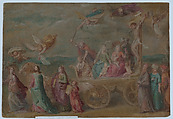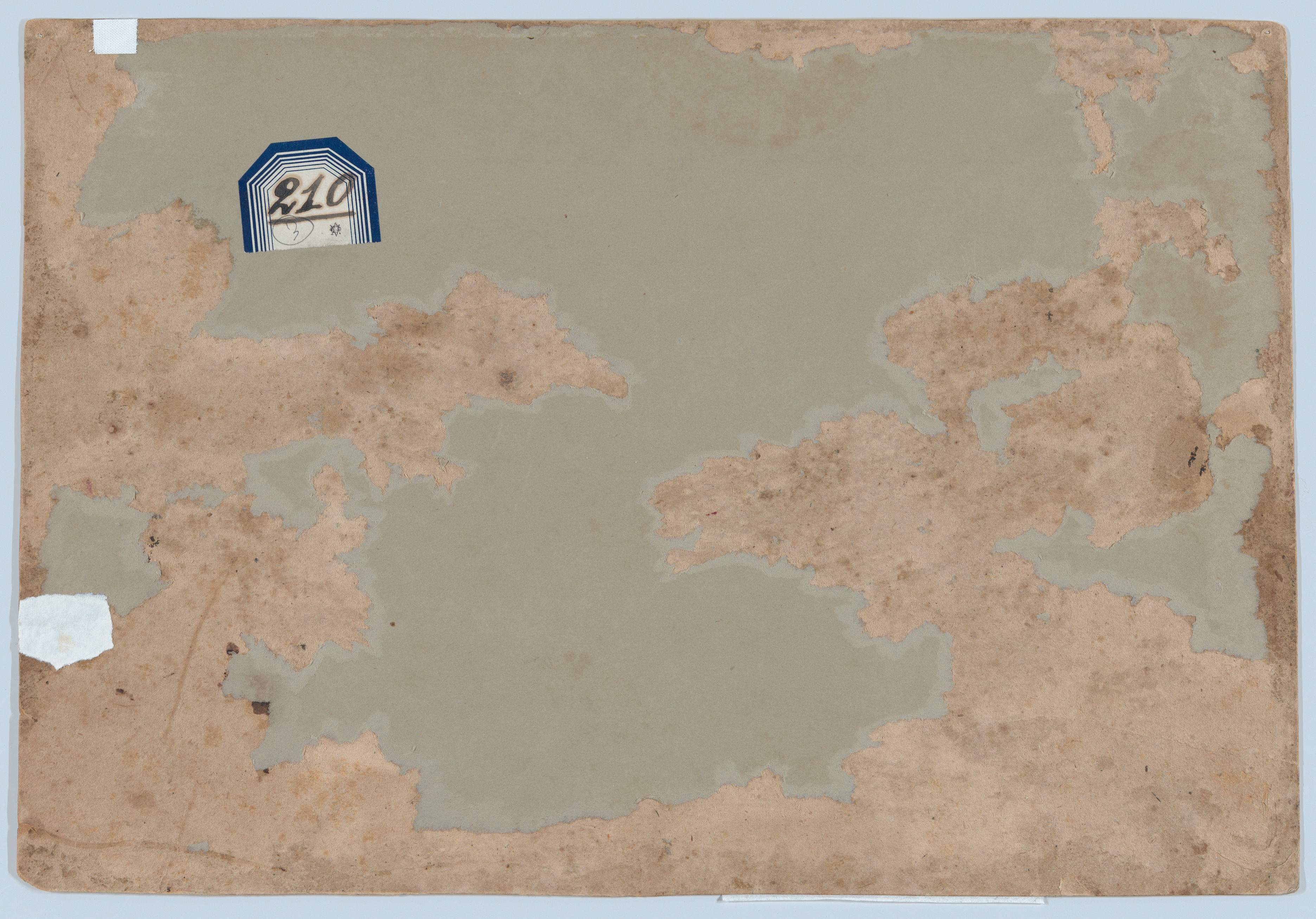The Triumph of the Word of God, from "Triumph of the Catholic Church" (oil sketch for a painting of the same subject)
Otto van Veen Netherlandish
Not on view
Oil sketch showing part of a procession. In the center, a horse-drawn wood chariot is depicted which has been adorned with a crucifix. Three allegorical figure groups are placed on top of the chariot consisting of a man sacrificing a child, the female personification of Faith, and the female personification of Charity. Four figures are depicted in front of the chariot, from left to right a woman representing ‘Ratio’, a man personifying ‘Sacred Scripture’ and a female and child. Three more figures, possibly the Magi (?) are walking right behind the chariot. Five angels are depicted in the sky above, several of which hold up banderoles with text. Various inscriptions have been incorporated in the sketch, but not all are legible.
This oil sketch by Otto van Veen, the teacher of Peter Paul Rubens, is a preparatory study for a painting, part of a series of six, devoted to the Triumph of the Catholic Church, entitled "Fundamenta et Principia Fidei et Catholicae Religionis in Sex Triumphales Currus Dispartita," dating from around 1615-20, and now in the Bavarian State Collections at Bamberg, Germany. It forms a pendant to a study for one of the other panels in the series, which was donated to the Museum in 2014. Van Veen based his compositions on designs by Johannes Stradanus (also in the collection), and in their turn, Van Veen's compositions inspired Rubens in about 1625, in his design for a series of tapestries devoted to the Triumph of the Eucharist. While Van Veen has (undeservedly) been credited for bringing the technique of oil sketches to the Netherlands, colored oil sketches such as this one are rather exceptional as he more often worked in brown or gray.
This image cannot be enlarged, viewed at full screen, or downloaded.
This artwork is meant to be viewed from right to left. Scroll left to view more.




